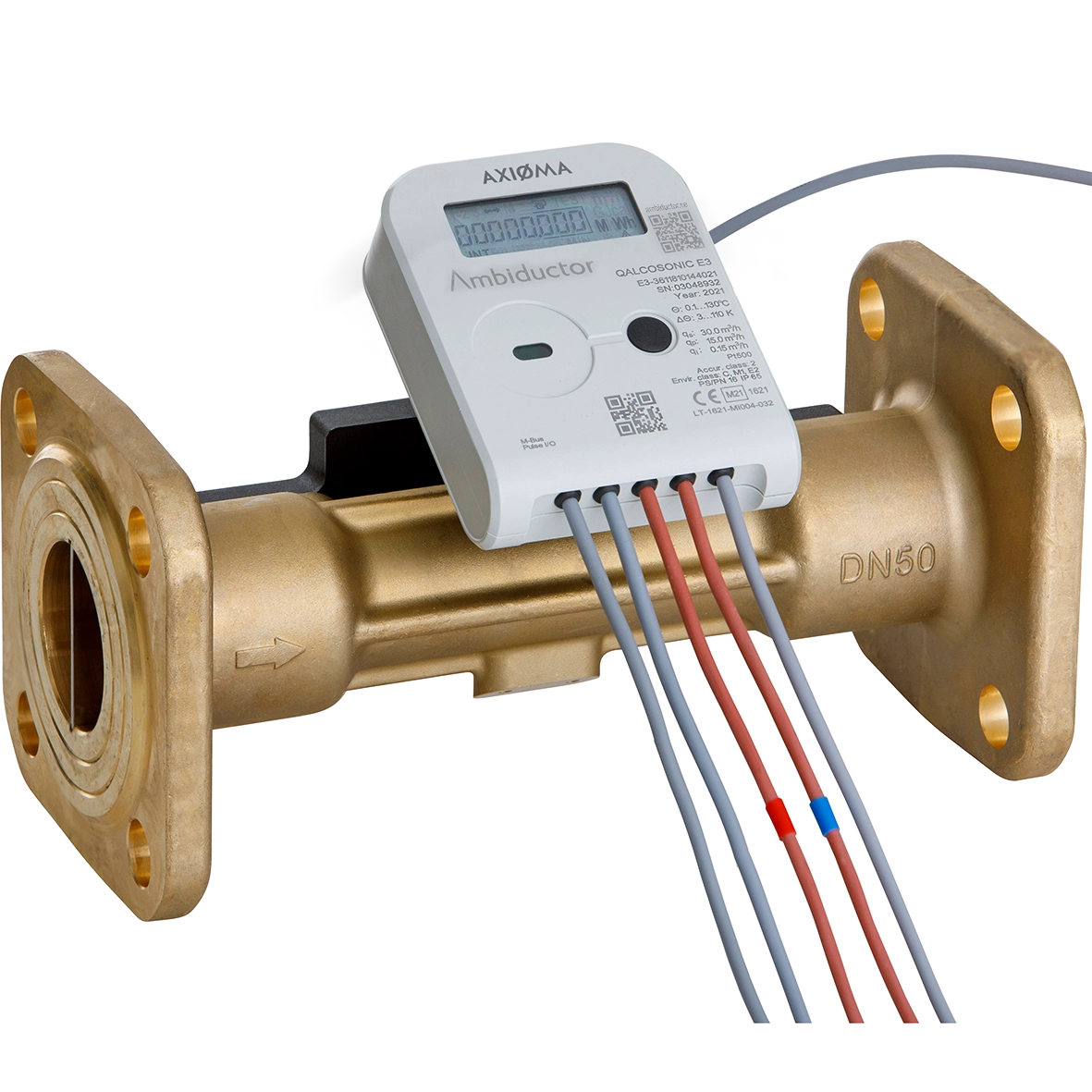
Heat Measurement
Heat measurement in buildings involves monitoring and recording how much heat energy is consumed for heating and hot water. Heat measurement is often performed using heat meters, which calculate energy usage based on the temperature difference and the flow of the heat carrier, such as water, circulating through a heating system. Measuring heat quantity in buildings can provide insights into energy consumption and costs, but also help improve comfort and reduce environmental impact. Here are some examples and reasons why heat measurement is important:
Examples of Heat Measurement in Buildings:
Multi-family buildings. In multi-family buildings, heat measurement can be used to measure heat consumption per apartment. With individual heat meters, residents can pay for their actual consumption instead of a flat-rate cost, which provides an incentive to use energy more responsibly. It can also help identify apartments with high losses, which can be addressed with improved insulation or sealing.
Office buildings. In office environments, heat measurement is used to monitor heat consumption in different floors or departments. By measuring energy usage for heating, property managers can see where consumption is high and optimize the heating system. This may involve heating certain areas differently depending on when they are used, saving energy and costs.
Schools and public buildings. In schools and public buildings, heat measurement can help regulate heat usage based on how often the premises are used. During weekends and evenings when the buildings are empty, heating can be reduced to save energy. This way, both costs and environmental impact can be lowered, especially in large properties.
Hotels and hospitals. In hotels and hospitals, heat measurement is used to keep track of energy consumption for both heating and hot water. These buildings often have high comfort requirements, but by monitoring consumption, operational times and heat production can be optimized, reducing operating costs and improving energy efficiency without negatively affecting comfort.
Industrial buildings. In industrial facilities, heat measurement can be used to monitor energy usage in production processes that require heat. By keeping track of consumption, inefficient processes can be identified and adjusted to reduce energy usage. This measurement can also reveal energy leaks and other losses that can be addressed to lower energy costs.
How is heat measurement performed?
Heat measurement is performed using heat meters that are typically placed on the pipes in the heating system. The measurement can be done in various ways depending on the building's needs:
Central heat meter. In many buildings, a subscription meter is placed in the heating system's substation, which measures the total energy consumption for heating and hot water. This provides an overview of the entire building's heat consumption and is used by energy companies for billing the consumed heat quantity, as well as other tariffs such as capacity fees and temperature fees.
Sub-meters for systems, apartments, or departments. In multi-family buildings and offices, sub-meters can be installed to measure consumption in specific systems, apartments, or departments. This way, one can see how energy is distributed within the building and detect unnecessary energy consumption.
Temperature and flow meters. Heat meters often work by measuring the temperature difference between incoming and outgoing water and multiplying this by the water flow to calculate consumed energy. This provides a very accurate measurement of how much heat has been used.
Enkey's solution for heat measurement:
Enkey's heat meters connect wirelessly to Enkey Building Insight®, allowing real-time readings of heat output and temperatures as well as heat consumption. This is cost-effective and facilitates analysis and optimization, as measurement data is collected and visualized automatically.